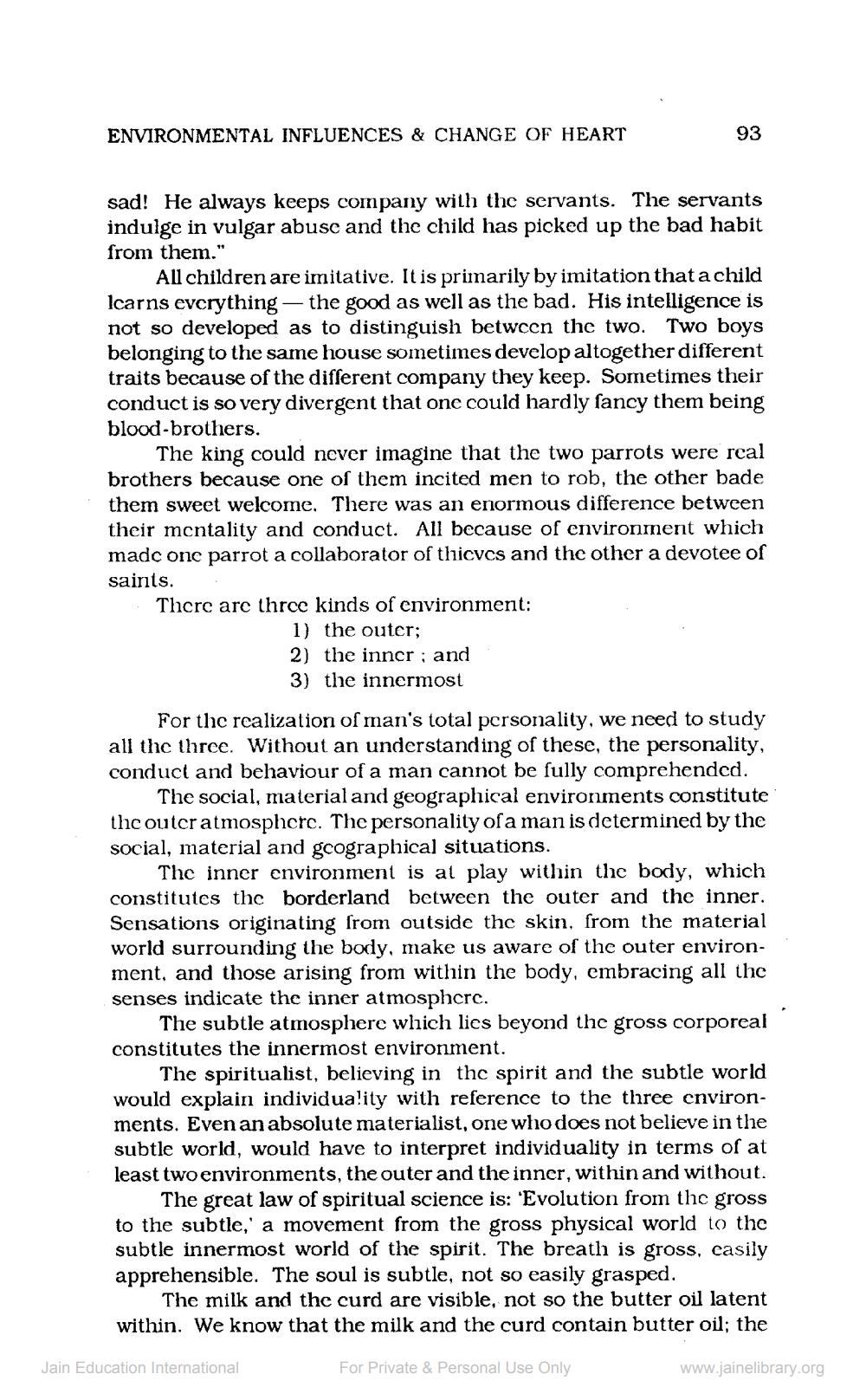________________
ENVIRONMENTAL INFLUENCES & CHANGE OF HEART
93
sad! He always keeps company with the servants. The servants indulge in vulgar abuse and the child has picked up the bad habit from them."
All children are imitative. It is primarily by imitation that a child lcarns evcrything — the good as well as the bad. His intelligence is not so developed as to distinguish between the two. Two boys belonging to the same house sometimes develop altogether different traits because of the different company they keep. Sometimes their conduct is so very divergent that one could hardly fancy them being blood-brothers.
The king could never imagine that the two parrots were rcal brothers because one of them incited men to rob, the other bade them sweet welcome. There was an enormous difference between their mentality and conduct. All because of environment which made one parrot a collaborator of thicvcs and the other a devotee of saints. There are three kinds of environment:
1) the outer; 2) the inner; and 3) the innermost
For the realization of man's total personality, we need to study all the three. Without an understanding of these, the personality, conduct and behaviour of a man cannot be fully comprehended.
The social, material and geographical environments constitute thc outcr atmosphere. The personality of a man is determined by the social, material and geographical situations.
The inner environment is al play within the body, which constitutes the borderland between the outer and the inner. Sensations originating from outside the skin, from the material world surrounding the body, make us aware of the outer environment, and those arising from within the body, embracing all the senses indicate the inner atmosphere.
The subtle atmosphere which lies beyond the gross corporeal constitutes the innermost environment.
The spiritualist, believing in the spirit and the subtle world would explain individuality with reference to the three cnvironments. Even an absolute materialist, one who does not believe in the subtle world, would have to interpret individuality in terms of at least two environments, the outer and the inner, within and without.
The great law of spiritual science is: 'Evolution from the gross to the subtle,' a movement from the gross physical world t subtle innermost world of the spirit. The breath is gross, casily apprehensible. The soul is subtle, not so easily grasped.
The milk and the curd are visible, not so the butter oil latent within. We know that the milk and the curd contain butter oil; the
Jain Education International
For Private & Personal Use Only
www.jainelibrary.org




